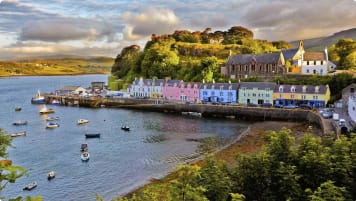Shetland Salt Fish: A History of a Staple Food in Europe
The Atlantic cod, the Faroe Islands, Spain, Scotland and Iceland are all historic cultures that have been influenced by Salt fish. An Antipodean travel company serving World Travellers since 1983 with small group educational tours for senior couples and mature solo travellers provides this article for the curious senior traveller.
25 Apr 23 · 13 mins read

Shetland Salt Fish
It may come as a surprise, but salt fish once played a significant role in shaping the economies, societies, and cultures of much of Europe. That’s because before food could be preserved by freezing, salting was vital to cure meat and fish, assuring a supply of protein during winter months when otherwise food would be scarce. Due to their abundance in the North Atlantic, salt cod and salt herring, in particular, were once eaten as essential foods of the weekly diet of millions of people, with huge industries around catching, curing, and selling them.
Pivotal to the trade of both types of fish were the Shetland Islands, a remote community of islands sitting on the Atlantic Ocean northeast of the Scottish mainland. Learning from the curing techniques of two of Europe’s great seafaring nations before them – the Basques with cod and the Dutch with herring – the Shetlanders dominated the fisheries in Europe in the 19th and early 20th centuries, supplying cod to the Mediterranean and then herring to northern Europe.
This article explores this history of Shetland salt fish and the wealth they created. Much of the information is adapted from John Goodlad’s The Salt Roads: How Fish Made a Culture.
The article is intended as background reading for Odyssey Traveller’s tours to Scotland. We conduct a tour of the Shetland Islands as part of our 20-day Scottish Islands and Shetland small group tours for seniors. This escorted tour for couples and solo travellers explores the Scottish Isles’ fairy-tale natural beauty, its ancient heritage, its World Heritage Sites, and world-famous islands. This includes three days in Shetland, where we view its wild and untamed scenery, learn about its economy and its Celtic and Viking past, and explore its sites and attractions along the way.

The Atlantic Cod in European History
The Atlantic cod has been one of the most heavily fished species of fish throughout history, favoured by Northern European fishers for its mild flavour and dense, flaky, white flesh. Its popularity could also be due to having virtually no fat, which means, when cured, it can be kept for a long period of time. There are even recorded cases of dried salt cod lying forgotten for decades being found again and eaten, apparently tasting as good as the day it was first cured.
The first people to preserve cod were the Vikings, who utilised the cold, dry air of Norwegian winters to dry the fish, they called stockfisk, without salt. Their method allowed them to eat the cod many months after it had been caught, taking it with them on their long sea voyages across the North Atlantic. Of course, salted cod would have lasted even longer – but, unfortunately, the Vikings did just not have enough salt to develop the curing method.
Another seafaring people, the Basques, living at the opposite end of Europe, did however have access to plentiful supplies of good quality salt. So, when they discovered the Grand Banks fishing grounds near Newfoundland in the 16th century, they were able to combine supplies to become the first Europeans ever to produce dried salt cod. They would split and salt the cod on board their ships, before unloading and laying them out in the sun to dry upon returning to the Basque country.

Once salted and properly dried, the fish is almost entirely protein. Simple to store, easy to transport and cheap to buy, it quickly became an essential guarantee against hunger in Southern Europe. Producing more than they needed themselves, the Basques began to export it to the rest of Spain, as well as to Portugal and Italy.
Then, when the Catholic Church redefined fasting days as days you couldn’t eat meat, as opposed to not eating at all, salt cod was looked towards as the readily available alternative. Before long, it had become the staple of the Mediterranean diet – not only as a basic food, but also as part of elegant dishes served in the finest of restaurants.
As demand kept growing, the Basque could no longer supply this market by themselves. It was inevitable that before long, merchants in Iceland, Norway and Shetland would pounce on the economic opportunity. Based on catching cod in the North Atlantic, a new export trade in salt cod was established.
Their methods were based on copying what the Basques had perfected. Hand lines with two baited hooks were used; and the cod were headed, gutted, washed, and split on deck before being salted in the hold. Fishing trips would last several months, after which the salt cod was laid out to dry on stone beaches until an acceptable product was produced.
The Shetland Beach Boys and the Processing of Salt Cod
The beaches used to dry salt fish are a far cry from the specialist factories where fish processing is done indoors today. Yet, in the 19th century, they were the economic heartland of the Shetland Islands. Beach drying of fish took place all over Shetland, with the drying of salt cod concentrated in the area between Scalloway and Skeld. In all, it involved hundreds of beaches, with the islands’ coasts glistening white like snow, acres of salt fish laid out side-to-side spreading as far as the eye could see.
The drying season would start in April and end in October. An older man, experienced in the science of drying fish, was officially in charge. However, it was teenagers, aged mostly 11 to 14 and known as the beach boys, who did the work.
Every morning, they would lay out every salt fish, skin side down, on top of the stones, before an endless battle against the weather conditions began. With a Shetland summer notoriously rainy, the fish would have to be collected at the first sight of rainfall, built into cube-like towers called steeples, and then covered with a tarpaulin to keep everything dry.
After the rain had passed the cod would then be laid out again, one by one. On a rainy day the gathering into steeples and then laying out again might have happened four or five times. Before dusk all the fish would then be gathered into steeples for the last time and covered to protect them from dew during the night.
In all, the salt cod took six weeks to dry sufficiently. Once judged to be fully dried, the cod were carefully placed, one on top of another, in large jute bags, which was how the product was shipped to Spain. Smacks (fishing boats) were always arriving to land their catch, and the aim was to get as many six-week cycles as possible fitted into the drying season.
The Role of Women
Women played a critical role in the cod fishery. Although not directly employed, the women had to run the family croft while their husbands and older sons were fishing for cod and their younger sons were working as beach boys. This involved hard work looking after a cow, lambing sheep, tending the crops, and fetching home peats, all the while also looking after young children.
Although being a cod fisherman allowed the family to earn some money, most of their food still came from the croft. The long summer days were filled with unending toil and responsibility for these women. Apart from a few days between long trips, the men were not home until it was almost winter, by which time most of the hard work on the croft had been done.
Smuggling Alcohol and Tobacco
In the 19th century, the British government imposed heavy taxes on alcohol and tobacco in Shetland. Close by, however, in Faroe, under the Danish government, there were no such taxes. Given the proximity between the two island groups, and the development of a distant-water fishery at Faroe, it is not surprising that an illicit trade soon began. With most of the distant-water smacks making several trips to Faroe each year, there were plenty of opportunities to purchase alcohol and tobacco at duty-free rates and then smuggle them back to Shetland to sell.
Indeed, it became a common practice to discharge brandy before making landfall in Shetland. The smacks operating out of Voe, for example, used to arrive on the northwest coast of Shetland as darkness was falling and then launch a small boat to take their contraband ashore to a safe and secluded spot for later collection. Often these spots were in remote locations one could only reach by a small boat from the sea or else a long hike of several hours through the hills.
Of course, this illegal activity was kept largely secret. The only official evidence which exists about this trade comes from the few incidents where contraband was successfully seized by the authorities. For example, it is noted that 81 gallons of brandy was found on board the Dryad in 1864 and 48 gallons on board the Cynthia in 1866. This would suggest an extensive operation in all if these examples are in any way representative of the quantities of illegal goods taken back by smacks every time from Faroe.
The government eventually reacted with extraordinary measures to try and stop the extensive smuggling operation. A new division of the coastguard service was established in February 1879, with the express purpose of ending the trade in contraband. It had plenty of staff and no expense was spared in their war against the smugglers.
The government also implemented severe penalties for smuggling, with fines of more than three times annual earnings. When these excessive fines did not deter the smugglers, incarceration was tried. Prison seemed to be no more effective a deterrent itself, however.
The profits were too important an additional source of income for the fishermen for any deterrent to work. And with only a small number ever apprehended, the potential reward of smuggling far outweighed any risk.
So, the government decided to up their game. To attempt to stop smacks on their way back from Faroe, a dedicated cutter was based in Lerwick, Shetland’s capital. She too proved ineffective though – no match for the cod fishermen and their extensive knowledge of the Shetland coastline. They thought nothing of taking a smack into a small inlet in pitch darkness to discharge contraband. Without this local knowledge, the customs officers, brought over from Scotland and England, could do nothing to stop them.
The local community also helped to thwart the customs officers’ efforts by refusing to provide intelligence. Indeed, it’s likely most of the islanders were engaged or connected to the practice themselves, and so there was an almost universal unwillingness to give any information to the authorities. Neither was there any social stigma associated with the smuggling trade, despite the risks of large fines or imprisonment.
The Atlantic Herring in European History
The Atlantic herring – often salted, smoked, or pickled – has a long history as a source of food in Europe. Because they often swim close to shore, large quantities can easily be caught even when using the most primitive of nets. But they are also exceptionally oily, which means they deteriorate very quickly. This means an effective preservation technique was vital in order to make best use of the fish.
The Dutchmen, Willem Beukels, is credited with perfecting the technique of salting herring in the late 15th century. Whereas the attempts of those before him had involved taking out all the fish intestines before adding salt, Beukels only took out some of the internal organs, leaving the liver and pancreas in the gut cavity. In doing so, he discovered that the salted herring tasted much better and, crucially, could be kept for up to a year. It is now known that the liver and pancreas release important enzymes that are essential to the curing process.
The Dutch quickly went to work to capitalise on the secret of preserving herring. They would design the herring buss, a two-masted, decked boat that was able to venture far out in the North Sea to catch larger quantities of herring. The buss, which had plenty of space below decks for gutting and salting the herring, would remain at sea, catching and processing, until its hold was full of barrels of salt herring. This could take many months. By the early 16th century, a fleet of more than a thousand busses fished throughout the North Sea.
Once they had fully supplied their domestic market, the Dutch then looked eastwards, towards Germany, Poland, and Russia, where there was a huge demand for cured fish. Before long, a barrel of salt herring became an essential source of protein for most households in eastern Europe during the long cold winters that swept in from Siberia. The Dutch, maintaining a monopoly on the salt herring trade, made huge profits, contributing to the period of prosperity associated with the Dutch Golden Age.

Scotland and Norway, however, began to challenge the Dutch monopoly from the early 19th century. They copied the Dutch model, but instead of curing the herring on board, the Scottish and Norwegian fleets landed their catch to curing yards, where thousands of women gutted and packed the herring into barrels. They were able to do this because their herring stocks were near the coast.
Most of the salt herring from Scotland and Norway was also exported to eastern Europe, with an extensive transport network connecting Scotland to Baltic ports and then to thousands of small villages and towns throughout Germany, Poland, and Russia. Salt herring was also a popular food through the north of Europe, eaten several times a week in the diet of many countries. For Scotland, it remained a popular cheap source of protein eaten extensively throughout the 19th century.
The Shetland Herring Industry
The herring fishing industry burst into the scene in Shetland, from nothing to a fleet of more than 300 herring boats in less than ten years. Before long, it was no longer exporting the salt cod for which it had built up its reputation, focusing solely on barrels of salt herring, numbering in their hundreds of thousands.
Originally inspired by the Herring boom in the Moray Firth, off the north coast of Scotland, Shetlander William Hay set up a curing business in 1875 and contracted ten Orkney boats to fish for the summer. Landing the herring to the Hays curing yard in Lerwick every day, the ventured turned out to be a success. This inevitably led to some Shetlands asking: if fellow islanders from Orkney could catch and land herring in Shetland every day, why not us?
So, the following year, three second-hand decked herring boats were bought from Scotland. That season, they would have an unbelievable success. Herring was caught on most nights, for which they all fetched high prices in the buoyant market at the time. This led to unheard of earnings for these first herring fishermen.
A headlong rush into herring naturally ensued chasing the riches. By 1883 the herring fleet had soared to 240, and two years later the fleet numbered 319, providing employment for almost 2,000 fishermen. In the same way as the fleet increased, so did the number of curing companies. By 1885 there were 74 curers in Shetland operating 114 curing yards where herring were landed, gutted, salted, and packed into barrels on a daily basis.
To cure herring, instead of a beach, a pier next to an area of flat land was required. Very soon, in almost every Shetland voe, small piers were built stretching into the sea. The backdrop to these piers was a collection of wooden huts. Some of these huts provided accommodation for the workers, while others were used for storing salt, as essential for curing herring.
Before too long, fishermen began to see that they could own the boats themselves, no longer needing merchants or curers as part-owners. This was a monumental social change for the fishermen, who had for generations been poorly paid hired hands.
And the industry would just keep on growing. In 1885, a combined fleet of Shetland and Scottish boats, venturing north from the Moray Firth, caught a record 55,000 tons of herring in the Shetland summer bonanza. Then in 1900, this record catch was exceeded, and new records exceeded again and again over the next few years. In 1905, a total of over 113,000 tons were landed in Shetland, with over one million barrels exported from Shetland that year. At this point, there were now more than 400 boats, employing over 3,000 fishermen.
Not only did the herring boom allow Shetland fishermen to earn wages, which previously would have been unbelievable, it also provided paid employment for women. Working as a gutter provided an opportunity for many young women to escape the drudgery and claustrophobia of the family croft. Leaving home for a few months every year and staying in the gutters’ huts, earning their own money, offered a taste of independence. Goodlad argues, “The opportunities afforded by gutting herring were nothing short of a social revolution in Shetland society.”
In Shetland during the boom years, every island and every township had its fleet of herring boats and crews of gutters feeding a seemingly insatiable appetite for salt herring in Europe. World events, however, would soon impact on the industry.
As the First World War broke out, Britain lost one of its main export markets for salt herring, Germany. Unrest in Russia, followed by the revolution, then devastated another huge market. These markets never fully recovered, due to the Weimar Republic focusing on its own fishing fleet to reduce reliance on imported herring, and difficulties of trade with the Soviet Union.
Then as living standards began to edge upwards throughout Europe, salt herring was no longer the only affordable source of protein for most people. As alternatives became available, salt herring was eaten less frequently. Then, with the Second World War, exports to Germany stopped completely; and following the Nazi Holocaust, the Jewish trading companies in Hamburg and Stettin – major importers of Salt Herring – no longer survived.
By the 1950s, the mass market for salt herring had largely gone. As the industry declined, the infrastructure which had supported it virtually disappeared. Today, Shetland’s fishing industry is very different. It’s still very important economically, the biggest industry on the island and worth over £300 million. But it now consists of a smaller, more technologically sophisticated fleet, catching a broader range of more than 30 different fish species.
Tour of the Shetland Islands
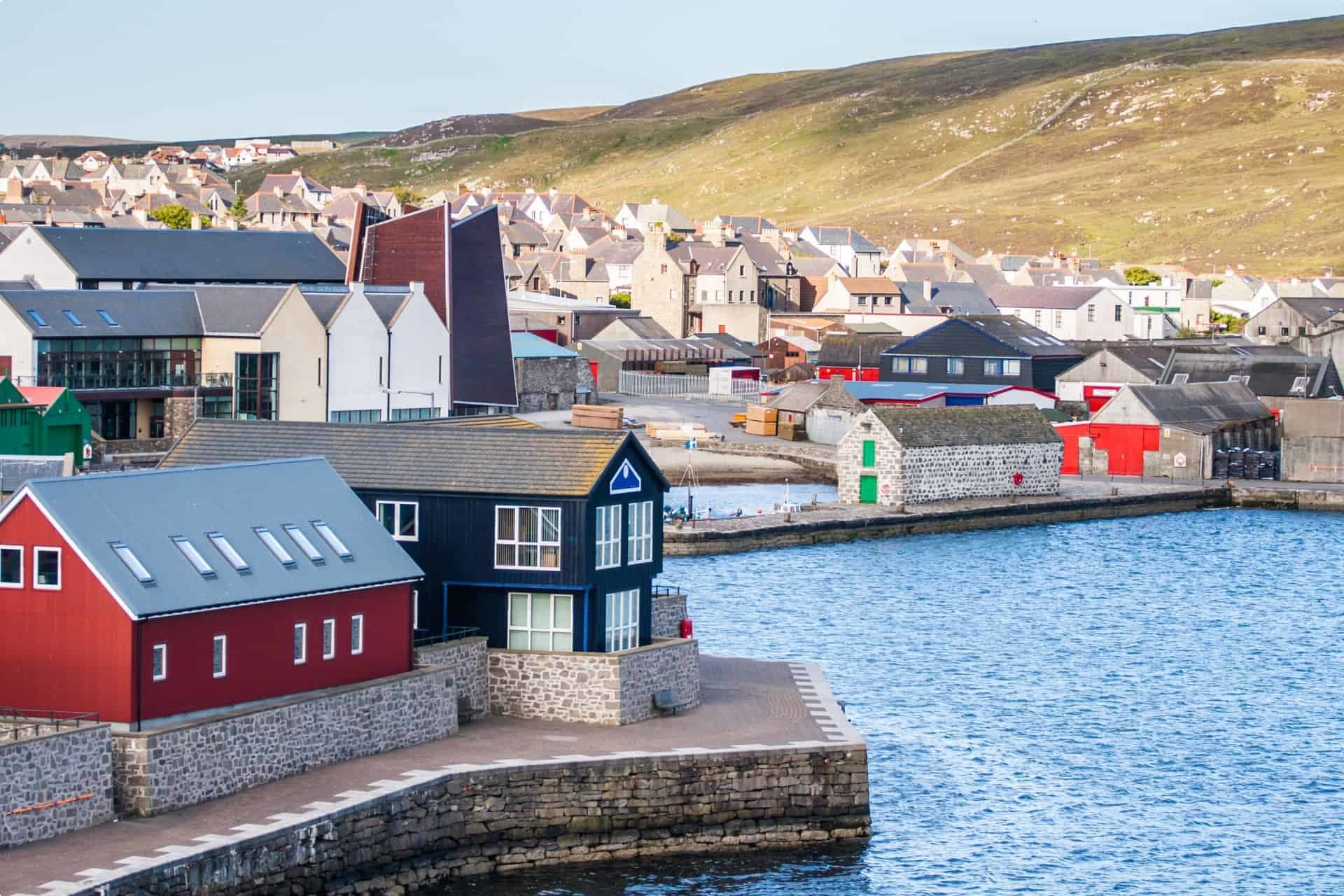
Odyssey Traveller visits the Shetland Islands as part of our 20-day Scottish Isles small group tour. Our tours of Scotland’s islands and its Neolithic sites begins in Glasgow, before heading to the Isle of Mull and Isle of Skye in the Inner Hebrides. We then head to the Orkney and Shetland Islands, before wrapping up in Edinburgh, with plenty of other stops along the way.
This Scottish Islands and tours of Shetland Islands program focuses particularly on the culture and heritage of the Scottish islanders. Because Odyssey ensures that these are small group tours of up to 16 people, we stay in comfortable family-run hotels and cruise to some of the more isolated Scottish isles. As we visit each island, we take short history tours and take in some of the most breath-taking scenery in the British Isles on the west coast that are the islands around Scotland.
This tour also links to a small group tour of the Faroe Islands.
Odyssey Traveller has been serving global travellers since 1983 with educational tours of the history, culture, and architecture of our destinations designed for mature and senior travellers. We specialise in offering small group tours partnering with a local tour guide at each destination to provide a relaxed and comfortable pace and atmosphere that sets us apart from larger tour groups. Tours consist of small groups of between 6 and 12 people and are cost inclusive of all entrances, tipping and majority of meals. For more information, click here, and head to this page to make a booking.
Articles about the Scottish Isles published by Odyssey Traveller.
The following list of articles published by odyssey Traveller for mature aged and senior travellers to maximise their knowledge and enjoyment of Scotland when visiting:
- The Scottish Isles
- Shetland Islands Discovered
- Questions about the Outer Hebrides
- How the Atlantic Ocean shaped early life in Europe
- Skara Brae
- Bell Rock Lighthouse
For all the articles Odyssey Traveller has published for mature aged and senior travellers, click through on this link.
External articles to assist you on your visit to Scotland
- A Long Love Affair With the Scottish Isles, in Pictures
- The hidden history of Scotland’s Small Isles
- 10 things you (probably) didn’t know about Scottish history
The rest of our Scotland-related articles can be found here.
Related Tours
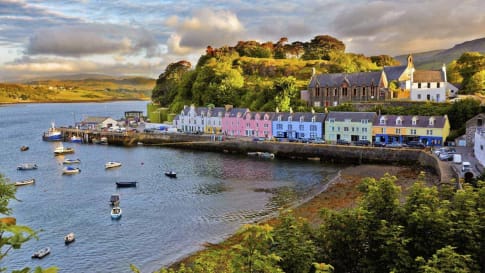
20 days
Jul, Sep, May, AugScottish Islands and Shetland small group tours for seniors
Visiting Scotland
An escorted small group tour for couples and solo travellers of the Scottish isles including the isle of Skye draws on local guides to share their knowledge of the destinations in this unique part of Scotland. UNESCO world heritage site are visited as breathtaking scenery and authentic experiences are shared in a group of like minded people on this guided tour of remote Scotland.
From A$16,695 AUD
View Tour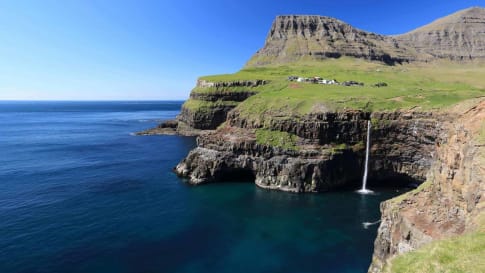
5 days
Apr, SepFaroe Islands Tour
Visiting Denmark
Few European tour companies offer small group journeys to the Faroe Islands. This five-day small group tour designed for mature couples and solo travellers. Local guides take you on trips off the beaten path to visit some of the islands' most stunning sights and to explore the capital of Tórshavn.
From A$7,250 AUD
View Tour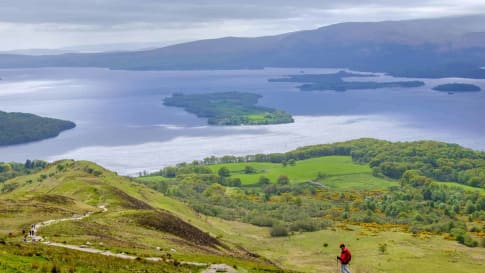
13 days
Jun, Aug, MayScotland's Great Trails Walking Tour
Visiting Scotland
An escorted walking tour of Scotland. This trip is mainly in the Scottish Highlands. Your tour leader guides you to Stirling Castle, Loch Lomond and Craignorms National park with experienced local guides. The tour for mature couples and solo travellers finishes in Edinburgh with time to visit Edinburgh Castle and the Royal mile a UNESCO World heritage site.
From A$11,560 AUD
View Tour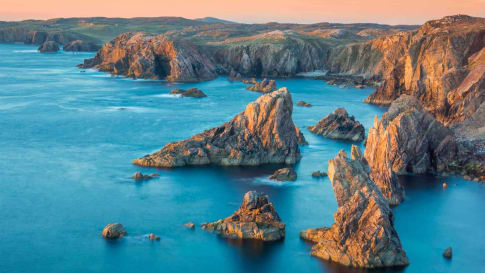
26 days
Sep, Apr, May, AugScotland's West Coast small group tour
Visiting Scotland
Explore the West of Scotland, join the gulf stream and visit and spend time with a small group educational tour for senior couples and mature solo travellers visiting with time to explore in depth, Skara Brae, Mull, Iona, Oban and Glasgow and the communities of the Atlantic.
From A$21,935 AUD
View Tour
22 days
Jul, Sep, Jun, AugScotland small group tour | Tracing 5,000 years of history
Visiting Scotland
This guided tour of Scotland with a tour leader and local guides includes the isle of Skye, Orkney islands, the Scottish highlands with breathtaking scenery. Edinburgh including the royal mile, Palace of Holyroodhouse, Fort William, Urquhart castle, Stirling castle, loch lomond, Hadrians wall and New Lanark also a UNESCO World heritage site.
From A$15,995 AUD
View Tour
5 days
Jun, JulEdinburgh City Tour
Visiting Scotland
A guided tour of the capital of Scotland, Edinburgh is a day tour collection with a tour leader and local guides. The old town of Edinburgh including the Royal mile and New town of Edinburgh are a UNSECO world heritage site and are included in our itineraries as well the Palace of Holyroodhouse.
From A$4,580 AUD
View Tour
From A$15,995 AUD
View Tour
19 days
JulWhisky and Other Scottish Wonders
Visiting Scotland
A guided small group tour of Scotland is a day tour collection that includes Edinburgh, the royal mile, Edinburgh castle, and the old town a UNESCO World heritage site Experience and learn about, Kellie castle, St Andrews, Skye, Balmoral castle, Loch Lomond and Loch Ness as well touring the Scottish highlands to finish in Glasgow.
From A$17,525 AUD
View TourRelated Articles

10 great books to read on the Scottish Isles
Why read books about the Scottish Isles before travelling there? This is recommended list of books for mature & senior travellers planning to travel to the Scottish Isles either as part of an Odyssey Tour…
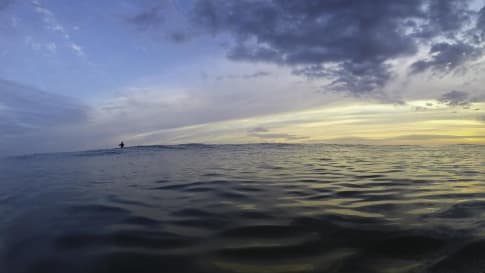
Atlantic Ocean and How it Shaped Ancient Communities In Europe
Article of interest for senior couples and mature solo travellers joining a small group European tour to Faroe Islands, Scottish Isles, Morocco or Portugal. Focus is on the early exploration of the Atlantic.

Country Spotlight: Scotland
Article sets the platform for small group tours learning about Scotland and the Scottish isles for senior couples and solo travellers.
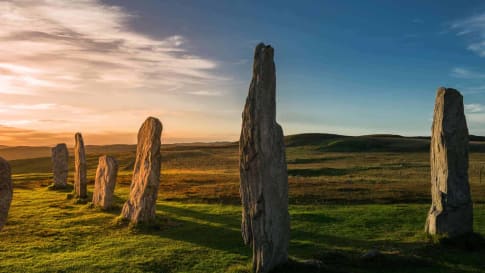
Shetland Islands Discovered: The Definitive Guide for Travellers
Article for senior and mature travellers, couples or solo travelers, interested in visiting the Shetland isles of Scotland. Explore on a small group tour to learn about the Bronze age, standing stones, peat and whisky and more when visiting the Scottish isles.
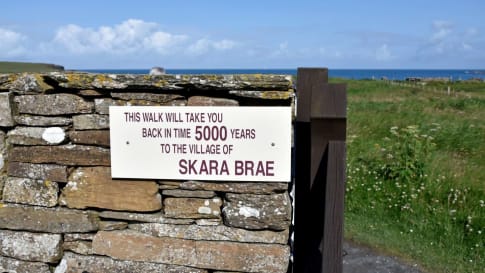
Skara Brae, Scotland
Article introducing Neolithic Britain and the trading routes to Iceland, the Faroe Islands and the Irish sea. Skara brae is included on the Scottish isles tour and the Prehistoric Britain program. Small group tours for senior couples and mature solo travelers.

Stevenson Family Lighthouse Engineers
Article about the generations of Stevenson's building lighthouses along the islands of Scotland and the Scottish coast.An Antipodean travel company serving World Travellers since 1983 with small group educational tours for senior couples and mature solo travellers.
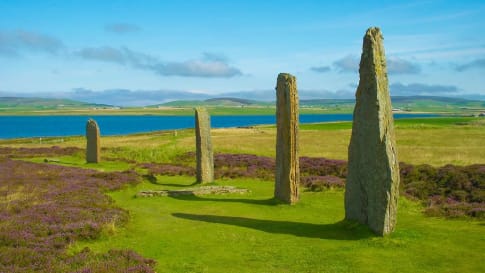
The Scottish Isles
The islands of Scotland are historically rich from Skara Brae to Isle of Skye and the inner and outer Hebrides. Learn more on a small group tour for seniors for couples and solo travellers about the Scottish isles.

Touring the beautiful Scottish Islands
Small group tours of the Scottish isles including Orkney, Skye, Iona and Shetland plus others for senior couples and solo travellers.

